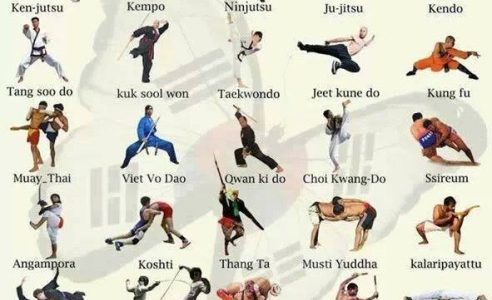The Evolution And Historical Significance Of Martial Arts Across Different Cultures
The Evolution And Historical Significance Of Martial Arts Across Different Cultures
Blog Article
Produced By-Padilla Fallon
Martial arts have a remarkable background that spans centuries and continents. You might locate it appealing how ancient techniques like Shuai Jiao and Kalaripayattu prepared for modern-day fight methods. These techniques not just stress physical skills yet also reflect the societies that birthed them. As you discover their evolution, consider exactly how globalization has changed these traditional kinds into crossbreed styles. What influences do you assume have shaped today's martial arts landscape?
Ancient Martial arts: The Structures of Combat
As you delve into the world of ancient martial arts, you'll find the rich foundations that shaped combat methods across societies. Very early methods concentrated on Self-Defense and survival, commonly including strikes, grappling, and weapons.
In old China, for instance, methods like Shuai Jiao highlighted tosses and joint locks, while India's Kalaripayattu showcased agility and liquid activity. Japanese samurai established Kenjutsu, a polished swordsmanship that highlighted discipline and technique.
These martial arts served not just for fight however likewise as a means of individual development, instilling values like respect and perseverance. The blending of these techniques gradually prepared for the diverse martial arts you see today, each showing the distinct approaches and requirements of its culture.
The Cultural Influence on Martial Arts Advancement
While martial arts often mirror the functional demands of a society, they additionally symbolize the cultural values and ideas of their beginnings. When you check out various martial arts, you'll observe just how they're affected by faith, ideology, and social standards.
For instance, the focus on respect and technique in Japanese martial arts originates from Zen Buddhism and samurai society. In contrast, Brazilian Jiu-Jitsu promotes versatility and strategy, formed by the need for efficiency in a diverse, modern atmosphere.
You might locate that the rituals, attires, and training methods mirror a neighborhood's background and identity. By comprehending these cultural impacts, you deepen your recognition of martial arts and their function fit human experiences across the globe.
Modern Adaptations and the Globalization of Martial arts
Martial arts have actually transformed dramatically in current decades, adjusting to modern culture and worldwide influences. vedic martial arts 'll notice that conventional forms have combined with contemporary strategies, producing hybrid styles like MMA. These adjustments accommodate diverse target markets, making martial arts accessible and attractive around the world.
With the surge of social media and electronic platforms, you can locate tutorials and competitions from all edges of the globe, damaging geographical barriers. This globalization has actually brought about a common recognition for different self-controls, from Brazilian Jiu-Jitsu to Taekwondo.
As you involve with these arts, you'll understand they're not just about combat; they promote health and fitness, technique, and mental wellness.
Ultimately, modern adaptations have actually enhanced the martial arts landscape, making it a dynamic and developing technique.
Final thought
In checking out the history and development of martial arts, you reveal a fascinating blend of methods, societies, and approaches. From more info here like Shuai Jiao and Kalaripayattu to the contemporary flexibility seen in MMA, martial arts mirror mankind's mission for Self-Defense and personal growth. As you involve with these techniques, you not just acquire abilities but also a much deeper gratitude for the diverse practices that shape our globe today. So, continue your trip and embrace the art of combat!
